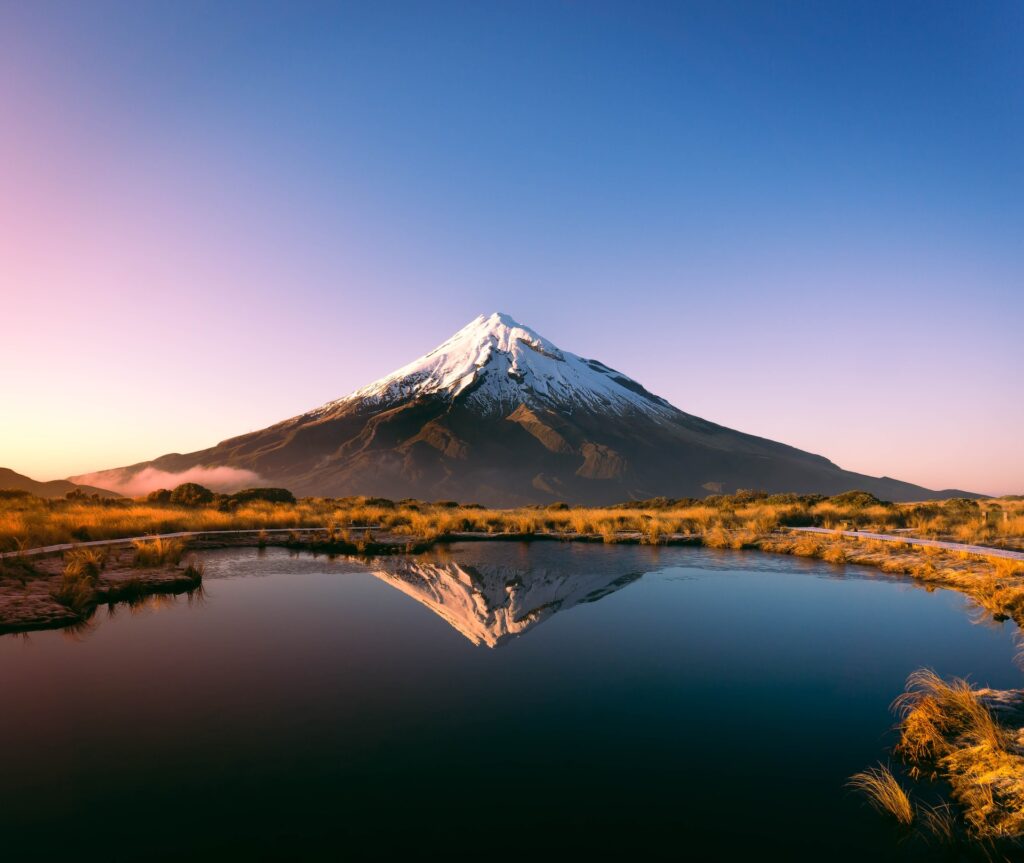The world is a canvas, and landscapes are the masterpieces that adorn it. But what makes landscapes truly enchanting is their ever-changing nature. From dawn to dusk and even through the night, landscapes put on a captivating show of transformation. In this article, we embark on a journey to explore the dynamic beauty of landscapes, focusing on the interplay of light, shadows, and colors that shape their magnificence.
Highlighting the Diversity and Transformation of Landscapes Throughout the Day
The natural world is a realm of constant change, and landscapes are no exception. As the Earth rotates on its axis, sunlight drenches the land, casting different hues, shadows, and moods. The morning sun bathes the earth in gentle, golden light, while the midday sun reveals the vibrant and sometimes harsh colors of nature. As the day progresses, the afternoon sun mellows into the warm glow of sunset, only to give way to the tranquility of twilight and the brilliance of a starlit night.
Each of these moments creates a unique atmosphere, painting landscapes with a diverse palette of emotions. Whether it’s the soft, ethereal light of dawn, the vibrant hues of midday, or the romanticism of twilight, landscapes continuously transform, offering photographers and nature enthusiasts a chance to capture their ever-shifting beauty.
Exploring How the Interplay of Light, Shadows, and Colors Shapes Their Beauty

Landscapes are intricate tapestries woven with the threads of light, shadows, and colors. The angle and intensity of sunlight throughout the day create a dance of contrast and harmony. In the early hours of dawn, the soft, diffused light of the rising sun caresses the world, creating delicate shadows and a dreamy, pastel palette. This gentle touch turns even the most ordinary scenes into ethereal landscapes.
As the day progresses, the sun climbs higher, casting sharper shadows and illuminating vibrant colors. Midday landscapes are often characterized by intense contrasts, with deep shadows and bright highlights, resulting in landscapes that exude energy and vitality.
Then comes the golden hour, a term cherished by photographers. During this magical time, just before sunset, the low angle of the sun bathes the world in a warm, golden glow, casting long, soft shadows that make landscapes appear as if they are painted with a brush of pure magic. The colors of nature come to life in ways that defy the imagination.
The Role of Time
Time is a silent artist, meticulously crafting the appearance of landscapes. The changing position of the sun in the sky dictates how landscapes are perceived. The transition from morning to night is a symphony of transformation, and understanding the role of time is crucial in capturing the essence of landscapes.
Discussing the Pivotal Role Time Plays in Altering a Landscape’s Appearance
Time is the conductor of nature’s orchestra. As the sun rises, it gently reveals the contours of the land. As it climbs higher, the landscape becomes bolder, the colors more vivid, and the details more pronounced. During midday, the sun shines its brightest, creating sharp contrasts and deep shadows.
The journey of time is particularly evident in the movement of shadows. In the morning, shadows are long and soft, adding depth and dimension to scenes. As noon approaches, shadows shorten and sharpen, enhancing textures and forms. Then, in the golden hour, shadows extend again, casting a warm, embracing light that can make any landscape seem like a dreamscape.
Introducing the Concept of “Golden Moments” in Landscape Photography
One of the most sought-after moments in landscape photography is the golden hour. This is when the world seems to pause, allowing photographers to capture landscapes at their most enchanting. During the golden hour, landscapes are bathed in a golden, soft light that transforms even the most straightforward scenes into stunning vistas.
The golden hour occurs twice daily, typically within an hour of sunrise and an hour before sunset. It’s during these times that landscapes take on a mystical quality, where the play of light and shadow is at its most enchanting. Landscape photographers often plan their shoots around these golden moments to capture the essence of a place in its most beautiful state.
The ever-changing nature of landscapes, as influenced by the interplay of light, shadows, and colors throughout the day, makes them a captivating subject for photographers and a source of awe for nature enthusiasts. Time, in its various stages, plays a pivotal role in shaping the appearance of landscapes, with the golden moments of sunrise and sunset being the crown jewels of landscape photography. So, whether you’re an avid photographer or simply someone who appreciates the beauty of the world around us, take the time to observe and cherish the ever-transforming landscapes that grace our planet.
The Morning Serenity: Embracing the Magic of Sunrise
The Magic of Sunrise

As the world awakens from its nocturnal slumber, a captivating transformation unfolds across the landscape. The sunrise, with its warm and gentle embrace, breathes life into the earth, illuminating the beauty that lies hidden in the early morning hours. This article delves into the enchanting allure of sunrise over landscapes, exploring the unique characteristics of morning light and its profound impact on the scenery.
Describing the Captivating Allure of Sunrise Over a Landscape
The magic of a sunrise is an experience like no other. As the first rays of the sun pierce the horizon, they paint the sky with a mesmerizing palette of colors, ranging from soft pastels to fiery reds and oranges. The entire landscape is bathed in this radiant light, and the world seems to come alive.
Sunrise has a captivating allure because it symbolizes new beginnings and the promise of a fresh day. The quiet moments before the world fully wakes up create a serene atmosphere ideal for reflection and appreciation. The landscape, shrouded in the soft, diffused light of the morning sun, takes on an almost dreamlike quality. It’s during these precious moments that nature’s beauty is at its most enchanting, and photographers often seek to capture this ethereal beauty.
Exploring the Unique Characteristics of Morning Light and Its Impact on Scenery
The morning light has a distinct quality that sets it apart from the rest of the day. It’s softer, more diffuse, and casts long, gentle shadows. This gentle illumination transforms the landscape, making it appear like a work of art. The contours of hills, valleys, and bodies of water are accentuated, and even the most mundane scenes become extraordinary under this magical light.
One of the unique features of morning light is its ability to render colors with unparalleled richness and subtlety. Reds, oranges, and purples blend seamlessly with the cool blues and greens of the landscape, creating harmonious and stunning compositions. This is why many photographers consider the hours around sunrise the best time to capture the essence of a place.
Capturing Dawn’s Beauty
Discussing Techniques and Tips for Photographing Landscapes During Sunrise
Photographing landscapes during sunrise requires a particular set of skills and techniques. To make the most of this magical time, photographers often use a tripod to ensure stability and capture long-exposure shots. This allows them to create silky-smooth water surfaces and capture the ethereal movements of clouds.
Using filters, such as neutral density and graduated filters, can help balance the exposure and enhance the colors in the frame. The key is to experiment and be patient. The beauty of a sunrise lies not only in capturing it but in experiencing it fully. Remember to arrive at your chosen location well in advance to scout the best vantage points and compositions.
Providing Insights into the Tranquil and Ethereal Qualities of Early Morning Landscapes
The tranquility of dawn is another remarkable aspect of capturing landscapes during sunrise. It’s a time when nature is at peace, and the world is accessible from the bustling activities of the day. The stillness of the early morning often results in serene and mirror-like reflections in bodies of water, adding a sense of calm to the composition.
Morning landscapes also exude an ethereal quality. The diffused light and the play of colors on the landscape create a dreamy atmosphere. As the mist rises from tranquil lakes and rivers, it adds enchantment to the scene. Photographers are often in awe of the peaceful and almost otherworldly qualities that dawn brings to the natural world.
Wildlife Encounters
Highlighting the Opportunities for Observing Wildlife During the Early Hours

The early morning hours are not just a treat for landscape photographers but also for wildlife enthusiasts. Many animals are most active during dawn, making it an ideal time for observing and photographing them. Birds, in particular, are often seen and heard during this time as they start their day with songs and hunting for food.
The calm and quiet ambiance of dawn allows for a closer connection with nature. It’s the best time to encounter wildlife going about their daily routines without the day’s disturbances. Whether observing a deer grazing in a meadow, a fox on a hunt, or a symphony of birds welcoming the sunrise, the early morning hours provide a unique opportunity to witness and document the wonders of the animal kingdom.
Sharing Anecdotes and Experiences of Capturing Natural Beauty in the Morning
Photographers and nature enthusiasts often have fascinating stories to tell about their encounters with wildlife during sunrise. From the mysterious call of an owl in the pre-dawn darkness to the playful antics of otters in the golden hour, these experiences are a testament to the magic of morning hours.
The unpredictability of wildlife encounters adds an element of excitement to the art of photography. These moments, when you become a silent observer of the natural world, are often the most rewarding. They remind us of the profound connection between landscapes, wildlife, and the early morning serenity.
The magic of sunrise is a time of profound beauty and serenity that transforms landscapes into breathtaking works of art. Photographing landscapes during this golden hour offers a unique opportunity to capture the essence of a place. Additionally, the early morning hours are a treasure trove for wildlife enthusiasts, providing a chance to observe and document the wonders of the animal kingdom. So, whether you’re a photographer or simply someone who appreciates the beauty of the natural world, embrace the magic of sunrise and let it inspire you.
The Golden Hour: A Photographer’s Delight
Understanding the Golden Hour
The world of photography is awash with enchanting moments, but one stands out as a true gem for photographers – the golden hour. This article is a tribute to the golden hour, where we’ll unravel its definition, understand its significance in photography, and explore how it bathes landscapes in soft, warm light, enhancing their beauty most magically.
Defining the Golden Hour and Its Significance in Photography
The golden hour, often called the “magic hour,” is a period shortly after sunrise and before sunset when the sun hangs low on the horizon. During this time, the sunlight is diffused, and its warm, golden hues cast a soft, gentle glow over the landscape. This unique quality of light has made the golden hour a favorite among photographers for centuries.
One of the critical factors that make the golden hour significant in photography is the quality of light it provides. The angle at which the sun’s rays pass through the Earth’s atmosphere during this time scatters the blue and green wavelengths, leaving behind the warm reds, oranges, and yellows. This results in a soft, flattering light ideal for capturing stunning images.
Explaining How It Enhances the Beauty of Landscapes Through Soft, Warm Light
The soft, warm light of the golden hour has the remarkable ability to transform ordinary scenes into extraordinary compositions. It bathes the landscape in a warm, golden glow that creates a serene and almost surreal atmosphere. This unique quality of light makes everything appear more enchanting, adding a touch of magic to the world.
Landscapes come alive during the golden hour. The rich, warm tones infuse life and depth into the scenery, enhancing the textures and colors of the environment. Shadows become long and soft, and the contrast between light and dark is reduced, resulting in images that are both vibrant and balanced. The combination of these elements makes the golden hour the perfect time for capturing the essence of a place.
Composition and Creativity
Discussing the Art of Composition During the Golden Hour
While the golden hour offers a splendid canvas, creating striking photographs during this time involves more than just the quality of light. Composition plays a pivotal role in capturing the magic of the moment. Whether you’re photographing landscapes, portraits, or any other subject, mastering the art of composition during the golden hour is essential.
The rule of thirds is a fundamental principle in composition. It involves dividing the frame into nine equal parts using horizontal and vertical lines. Placing the subject or vital elements at the intersections or along the lines can result in a well-balanced and visually appealing composition.
Framing is another technique that works wonderfully during the golden hour. This involves using elements in the scene to frame the subject. For instance, you might use overhanging branches, archways, or natural features to create a frame within your frame. This adds depth and context to your composition.
Providing Photography Tips to Make the Most of This Magical Time
To make the most of the golden hour, it’s essential to be prepared and ready to shoot when it arrives. Here are a few tips to ensure you capture the beauty of the golden hour effectively:
- Arrive Early: Plan your shoot well and arrive at the location early. The golden hour can pass quickly, so being prepared is crucial.
- Use a Tripod: A tripod is your best friend during the golden hour. It ensures stability, especially for long exposure shots, and allows for precise framing.
- Experiment with Angles: Try shooting from different angles and heights to find the most exciting and dynamic compositions.
- Stay Patient: Sometimes, the most captivating moments happen in the last few minutes of the golden hour. Stay patient and keep shooting.
The golden hour is a photographer’s delight, offering a window of soft, warm light that transforms landscapes into breathtaking works of art. Understanding its significance in photography and mastering the art of composition during this magical time is critical to capturing images that are both enchanting and visually stunning. So, whether you’re a seasoned photographer or an amateur enthusiast, the golden hour is your canvas for creating photographic masterpieces.
The Midday Challenge
Coping with Harsh Sunlight
Midday, with the sun directly overhead, presents a unique set of challenges for photographers seeking to capture landscapes. The harsh sunlight, with its intense brightness, casts strong shadows and highlights that can be tricky to handle. This article acknowledges the difficulties of photographing landscapes during midday and offers solutions and techniques to minimize these challenges.
Acknowledging the Challenges of Capturing Landscapes During Midday

Midday photography often presents a significant challenge due to the harsh sunlight. The sun is at its zenith, casting intense, direct light that can create strong contrasts, deep shadows, and overexposed highlights. These conditions can make it challenging to capture landscapes in all their beauty.
One common issue photographers face is the stark contrast between light and shadow. Shadows are deep and dark, while highlights are often overexposed. This dynamic range can be beyond the capabilities of a camera’s sensor, making it challenging to capture all the details in a single exposure.
Offering Solutions and Techniques to Minimize Harsh Shadows and Highlights
Fortunately, there are several techniques and tools that photographers can use to cope with the harsh midday sunlight and create compelling images:
- Use a Polarizing Filter: A polarizing filter can help reduce glare and control reflections, making colors appear more vibrant and reducing harsh highlights.
- Shoot in RAW: Shooting in RAW format allows for more extensive post-processing. This flexibility is beneficial when dealing with harsh lighting conditions, as you can adjust exposure and recover details in post-production.
- Experiment with Exposure Bracketing: Exposure bracketing involves taking multiple shots at different exposures and combining them in post-processing. This technique can help capture details in both shadows and highlights.
- Seek Shaded Areas: Look for natural shade, such as under trees, rock formations, or architectural structures. These areas provide softer, more diffused light and can help minimize harsh shadows.
- Embrace Silhouettes: Sometimes, rather than fighting the harsh light, you can use it to your advantage. Create dramatic silhouettes by positioning your subject in front of the sun.
- Wait for Cloud Cover: Clouds act as natural diffusers, softening the sunlight. If you have time, waiting for a few clouds to pass can improve your midday shots.
Unique Midday Landscapes
Highlighting the Distinct Beauty of Landscapes at Noon
While midday light can be challenging, it also has amazing qualities that can enhance the beauty of landscapes. One of these qualities is the vibrant and saturated colors often associated with this time. The intense sunlight can bring out the richness of colors in the environment, making landscapes appear more vivid and dynamic.
Discussing How Different Landscapes Shine During This Time
Certain landscapes thrive under midday light. Coastal areas, for instance, benefit from the brilliant reflection of the sun on the water’s surface. The play of light on waves and the sparkle of the sea can create stunning images. Desert landscapes also come to life at midday, with the bright, direct light emphasizing the textures and patterns in the sand and rock formations.
Moreover, midday is an excellent time to capture urban landscapes. The strong, even light can highlight architectural details, and the hustle and bustle of the city can add an element of life and energy to the scene.
While midday photography poses challenges due to harsh sunlight, it also offers unique opportunities to create distinct and vibrant images. By using the proper techniques and tools, photographers can minimize the impact of harsh shadows and highlights and bring out the beauty of landscapes at noon. So, the next time you venture out to capture midday landscapes, remember that with the right approach, even the most challenging lighting conditions can result in stunning and dynamic photographs.
The Enchanting Evening
The Elegance of Sunset
As the sun descends toward the horizon, the world takes on a different hue. The evening sky becomes a canvas for a masterpiece that captivates the senses – the sunset. In this section, we explore the enchantment of sunset over landscapes, delving into the romantic qualities of evening light and the allure it brings to the natural world.
Exploring the Enchantment of Sunset Over Landscapes
Sunsets have an undeniable charm, often evoking a sense of wonder and tranquility. As the sun nears the horizon, it bathes the landscape in a warm, golden light that transforms even the most ordinary scenes into something extraordinary. This transformation makes sunsets an enchanting subject for photographers and a mesmerizing spectacle for all who witness them.
One of the magical elements of a sunset is the myriad of colors it unveils. The sky often showcases a breathtaking spectrum of hues, from fiery reds and oranges to soft purples and pinks. The colors dance across the sky, creating a dynamic and captivating visual display.
Discussing the Romantic Qualities of Evening Light

Evening light carries with it a sense of romance and nostalgia. It’s a time when the world begins to wind down, and the hustle and bustle of the day gives way to a serene and contemplative atmosphere. This soft, warm light has an innate ability to stir emotions and create a sense of intimacy with the surroundings.
The romantic qualities of evening light are particularly evident in how it bathes landscapes. Trees, hills, and bodies of water take on a dreamlike quality, and even the most ordinary scenes are rendered with an extraordinary touch. This quality of light makes it an ideal time for capturing the essence of a place and conveying a sense of beauty and serenity.
Twilight Tranquility
Describing the Serene Moments During Twilight
As the sun completes its descent below the horizon, a serene transition takes place. The sky enters twilight, a time between day and night, where the world is cloaked in a gentle and fading light. Twilight is a brief but enchanting period, and it’s often divided into three phases: civil twilight, nautical twilight, and astronomical twilight.
Civil twilight is the first phase, characterized by soft, diffused light. It’s an ideal time for capturing cityscapes, as artificial lights start to illuminate urban areas, creating a beautiful blend of natural and artificial light.
Nautical twilight is the second phase, and it’s favored by photographers for its deep blues and soft gradients. This is when seascapes and coastal landscapes shine, with the remaining light casting a captivating glow on the water’s surface.
Astronomical twilight is the final phase, and it’s the darkest. It’s an excellent time for capturing astrophotography as the sky darkens and stars begin to appear. This phase allows for stunning shots of the night sky and celestial bodies.
Sharing Experiences of Capturing Landscapes in the Fading Light
Photographers often have remarkable experiences to share about capturing landscapes during twilight. From the tranquility of watching the last light fade over a serene lake to the thrill of witnessing the first stars appear in the night sky, twilight moments are peaceful and magical.
The changing light during twilight creates a dynamic and ever-evolving canvas. Photographers must be patient and prepared to capture the right moments, as the transitions are swift. However, the rewards are well worth the effort, as twilight offers an exceptional opportunity to capture landscapes in their most enchanting and serene state.
The evening brings with it the enchantment of sunsets and twilight. The elegance of sunset over landscapes, mesmerizing colors, and romantic qualities make it a favorite subject for photographers and a source of wonder for all. Twilight, with its serene transitions and fading light, adds an extra layer of magic to the landscape. Whether you’re a seasoned photographer or simply someone who appreciates the beauty of the natural world, the evening offers a time to embrace the charm of sunset and twilight and let it inspire your senses.
The Nighttime Wonders
Starry Landscapes
When the sun sets, a new world awakens. The night sky unveils its splendor, and landscapes take on a unique and ethereal beauty. In this section, we delve into the exceptional allure of landscapes under the night sky, exploring the captivating realm of astrophotography and the challenges it presents to photographers.
Delving into the Unique Beauty of Landscapes Under the Night Sky
Nighttime landscapes possess a unique beauty that is entirely their own. As the sun’s light retreats, the world transforms into a dark canvas adorned with stars, celestial bodies, and the soft glow of the moon. This enchanting scenery offers a sense of serenity and wonder, inviting photographers to capture the sublime.
The true magic of starry landscapes lies in the play of light and shadows. The soft illumination of the night sky bathes the landscape in a gentle, silvery glow, unveiling details that remain hidden during the day. The calm and stillness of the night create a dreamy atmosphere where the world seems to pause for a moment of reflection.
Discussing Astrophotography and the Challenges It Presents
Astrophotography is a discipline that allows photographers to capture the celestial wonders that adorn the night sky. It involves taking long-exposure shots of stars, planets, galaxies, and other astronomical objects. While the results can be breathtaking, astrophotography comes with its own set of challenges.
One of the primary challenges of astrophotography is the need for long exposure times. This is essential to capture the faint light of distant stars and galaxies, but it can also result in blurring if not executed with precision. A sturdy tripod and a remote shutter release can help minimize vibrations during long exposures.
Another challenge is light pollution caused by artificial lighting from cities and other sources. To mitigate this issue, photographers often seek out dark sky locations, far from urban areas, to capture the full splendor of the night sky. Light pollution filters can also help reduce the impact of artificial lighting.
Cityscapes at Night
Exploring the Mesmerizing Beauty of Cityscapes Illuminated at Night
Cityscapes take on a mesmerizing beauty when illuminated at night. The urban landscape transforms into a vibrant tapestry of lights, creating a dynamic and alluring ambiance. The contrast between the night and the bright city lights adds a layer of drama and sophistication to the scene.
Cityscapes at night often feature iconic landmarks, such as skyscrapers, bridges, and monuments, which become beacons of urban life. These structures are often creatively lit, adding an element of architectural elegance to the cityscape. The reflections of city lights on bodies of water, like rivers and lakes, create mirror-like surfaces that add depth and dimension to the composition.
Offering Tips for Capturing the Urban Charm After Dark
Capturing the charm of cityscapes at night requires a keen eye for composition and the proper techniques. Here are some tips for capturing stunning urban nightscapes:
- Use a Tripod: To achieve sharp and well-exposed images, a sturdy tripod is essential. It helps to eliminate camera shake during long exposures.
- Choose the Right Time: The blue hour, which occurs just after sunset and before complete darkness, is an ideal time for capturing cityscapes. During this time, the sky takes on a deep blue hue, and the city lights become more pronounced.
- Experiment with Long Exposures: Long-exposure shots can create captivating effects, such as light trails from moving vehicles and silky-smooth water reflections.
- Frame the Shot: Use foreground elements, such as trees, arches, or bridges, to frame the cityscape and add depth to the composition.
- Adjust White Balance: To capture the true colors of city lights, it’s essential to adjust the white balance settings in your camera.
The nighttime offers a world of wonders for photographers. Starry landscapes unveil the celestial beauty of the night sky and the challenges of astrophotography. Cityscapes at night, on the other hand, showcase the urban charm illuminated by the shimmering lights of the city. Whether you’re an astrophotographer gazing at the stars or a cityscape enthusiast capturing the vibrancy of the urban night, the nighttime wonders provide endless opportunities for capturing beauty and wonder under the cover of darkness.
Conclusion: Embracing the Beauty of Varied Landscapes
In the journey through the articles exploring landscapes at different times of day, we’ve traversed a diverse and captivating terrain. From the golden glow of sunrise to the enchantment of sunset, from the challenges of midday to the wonders of nighttime, we’ve witnessed the ever-changing beauty of nature. This conclusion serves as a summary of our exploration and encourages photographers to appreciate the dynamic and enchanting world of landscapes.
The beauty of landscapes is a chameleon, revealing different facets throughout the day. Each moment brings its unique qualities, transforming the ordinary into the extraordinary. The soft, diffused light of the morning makes landscapes appear like ethereal paintings, while the harsh midday sun adds drama and vibrancy. The evening enchants with its romantic hues and twilight’s serene transition, and the night unveils a world of stars and city lights.
Throughout our exploration, we’ve also acknowledged the challenges of photographing landscapes. From dealing with the harsh sunlight of midday to mastering the art of astrophotography, each challenge presents an opportunity to learn and grow as a photographer. These hurdles are the threads that weave the tapestry of our photographic journey, making each successful shot all the more rewarding.
As we wrap up our journey, it’s essential to remember that the ever-changing beauty of landscapes is a testament to the richness of our natural world. It encourages us to be present, to embrace the moment, and to appreciate the beauty that surrounds us. Whether you’re a seasoned photographer seeking the perfect shot or someone who simply enjoys the wonders of nature, the landscapes at different times of day offer a canvas of endless inspiration.
So, as you venture out to capture the essence of landscapes, remember that each moment is a gift, and each challenge is an opportunity. Embrace the beauty of varied landscapes, for they reflect the world’s ever-changing, ever-enchanting nature.







